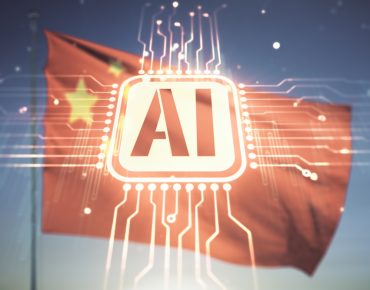Report: China’s Race to Build AI Datacenters Has Hit a Wall

China’s multi-billion-dollar AI infrastructure gold rush is now unraveling, according to a new investigative report from Caiwei Chen, a reporter covering technology topics related to China at MIT Technology Review.
“Just months ago, a boom in data center construction was at its height, fueled by both government and private investors. However, many newly built facilities are now sitting empty,” Chen writes, noting the publication has sources on the ground including contractors, an executive at a GPU server company, and project managers.
The sources say companies who built datacenters during the boom are now treading water, and according to Chinese news outlets, up to 80% of China’s newly built computing resources remain unused.
A Frenzy of Investment Meets a New Reality
Why all these idle datacenters? Chen’s report reveals a cooling mix of speculative investments based on AI hype converging with the explosive release of DeepSeek.
The so-called “DeepSeek Effect” has rippled through the AI market and global economy, as the model’s efficiency at training with reduced infrastructure has undercut demand for large-scale datacenter deployments. It is potentially reshaping, though not yet redefining, the current trajectory of AI infrastructure strategy. China may be feeling the earliest and most visible impacts.
The primary business model for China’s new datacenters has been renting out GPU clusters for model training. But as DeepSeek’s open-source model R1 matched ChatGPT-level performance at a fraction of the cost, smaller players have abandoned their plans to pretrain large models. The demand for training infrastructure has collapsed, just as hundreds of new facilities were ready to come online.
 In parallel, the technical demands of AI are shifting. Today’s compute bottleneck isn’t in training but in inference. Specifically, running models in real time, especially for step-by-step reasoning tasks. These workloads require hardware optimized for low-latency performance and geographic proximity to major tech hubs. Yet many of China’s new data centers were built in rural or remote regions, optimized for the wrong kind of AI work, and too far from talent and end users, Chen reveals.
In parallel, the technical demands of AI are shifting. Today’s compute bottleneck isn’t in training but in inference. Specifically, running models in real time, especially for step-by-step reasoning tasks. These workloads require hardware optimized for low-latency performance and geographic proximity to major tech hubs. Yet many of China’s new data centers were built in rural or remote regions, optimized for the wrong kind of AI work, and too far from talent and end users, Chen reveals.
After ChatGPT’s debut in late 2022, China moved fast to position AI infrastructure as a national priority. The central government encouraged local officials to develop AI datacenters, dubbed “smart computing centers,” and by 2024, over 500 were announced. At least 150 were completed, backed by state-owned firms and public companies eager to ride the AI wave.
But the boom was short-lived. Of the more than 140 companies registered in 2024 to build large models, only about 10% remained active by year’s end. Many of the firms and investors involved had little AI expertise and were chasing government subsidies, cheap electricity, or access to state loans, according to this report.
“The growing pain China’s AI industry is going through is largely a result of inexperienced players—corporations and local governments—jumping on the hype train, building facilities that aren’t optimal for today’s need,” says Jimmy Goodrich, senior advisor for technology to the RAND Corporation, as quoted in Chen’s report. Goodrich says it’s likely that the Chinese government will step in to assume management and reassign these assets to more capable operators, now that investors are seeking to sell at below-market rates.
The AI Arms Race Isn’t Slowing Down
Even as many of China’s new data centers remain idle, the country’s central government shows no signs of retreating from its AI ambitions. In early 2025, it convened a high-level AI symposium, doubling down on infrastructure as a national priority and emphasizing the need for technological self-reliance. Major firms are following suit: Alibaba has pledged more than $50 billion toward cloud and AI hardware over the next three years, while ByteDance plans to spend $20 billion on GPUs and datacenters.
The United States is pushing just as hard, Chen notes. The Stargate initiative, backed by OpenAI, Oracle, and SoftBank, aims to invest up to $500 billion into advanced data centers globally. For Beijing, the idea of scaling back now is unlikely. As RAND’s Jimmy Goodrich puts it, underused infrastructure may be viewed not as failure, but as “a necessary evil” in building long-term capability.
Demand for Nvidia chips like the H20 (a chip custom-designed for the Chinese market) and the H100 remains strong, driven in part by Chinese companies racing to deploy their own versions of DeepSeek’s open-source models. But infrastructure alone is no longer the bottleneck.
As Fang Cunbao, a longtime data center executive, told Chen: “The market is too chaotic. The early adopters profited, but now it’s just people chasing policy loopholes.” He’s since left the industry, convinced that future progress depends not on building more, but on having clear, deployable plans for using AI well. “What stands between now and a future where AI is actually everywhere,” he says, “is not infrastructure anymore, but solid plans to deploy the technology.”
You can read the full reporting by Caiwei Chen at MIT Technology Review here.












